In the Blog
Honouring and Reclaiming Self-Determination of Indigenous Peoples - Take Back the Night 2013
Over the 5 years I have been in leadership of Take Back the Night, I have never experienced the planning committee and the event in the way I did this year. I believe it was the leadership and guidance of Indigenous women and 2 Spirit People who changed the way we do Take Back the Night. I also believe that Take Back the Night changed because settlers weren’t running the show like in the 32 previous years, and that shifted the way settlers experienced Take Back the Night and the event’s ability to create awareness around sexual violence.
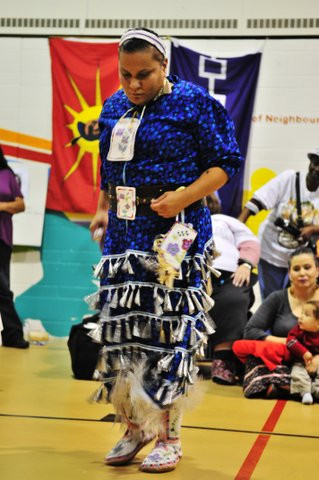
Gelay Amdo
Many people came up to me after this year’s event and said it felt “different.” Some people didn’t feel they could take on the same roles as previous years and some felt they couldn’t take up the same space. There were changes to Take Back the Night traditions, like Wendo ending the rally with chants, and Elders and Drummers walking with women who use mobility devices this year, instead of these women solely leading the march. Another clear difference this year was men being invited to march with us, for the first time in 33 years of Take Back the Night.
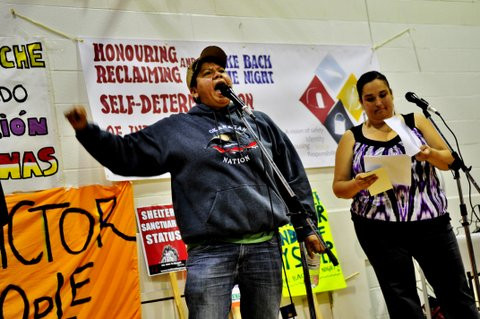
Gelay Amdo
Take Back the Night, in my mind, has a particular formula that I have repeated in some aspects year after year. This year, the differences were sure. So when we decided to honour and reclaim self-determination of Indigenous Peoples this year, our ways, including our ways of doing, had to come into question and things had to change.
For me, the questions were: is Take Back the Night really a tool Indigenous people can use to end sexual violence in their own communities? Did Take Back the Night reinforce colonization in its pre-set ways? Do settlers have all the control of Take Back the Night as an event, and does that make it inherently colonial? How can we decolonize Take Back the Night?
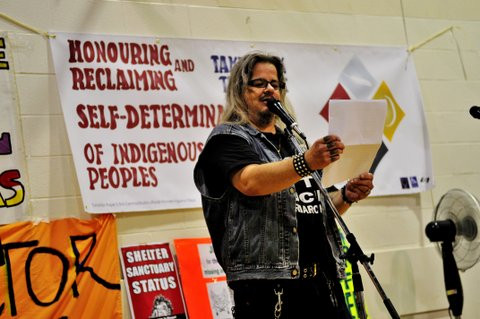
Gelay Amdo
Many folks were worried that if we talked about the issues of land, sovereignty, and Indigenous rights, we would forget about sexual violence. But these things are very connected in the colonial histories of Native communities. Blankets with small pox were given to Native people and this killed a majority of them when settlers arrived. After then, with guns in hand, Europeans waged war for occupation of Indigenous land, and one of the crucial ways settlers took down communities of Native tribes and nations, were to degrade and rape the women. Rape is one of the cheapest and most effective tools to degrade women and thus entire communities, during colonial times, and still today.
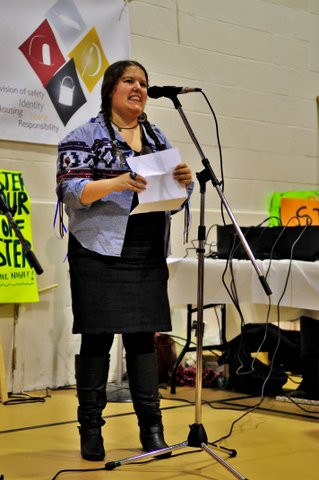
Gelay Amdo
So even though the issues of colonization are complex for Indigenous communities, rape is always there. Indigenous women are 5 times more likely to experience sexual and other types of violence than non-Native women in Canada (Stats Canada report 2009). Native women will also be more likely to experience violence from someone outside their racial group than other women. And Native men and women are the number one racialized group to be incarcerated in Canadian prisons.
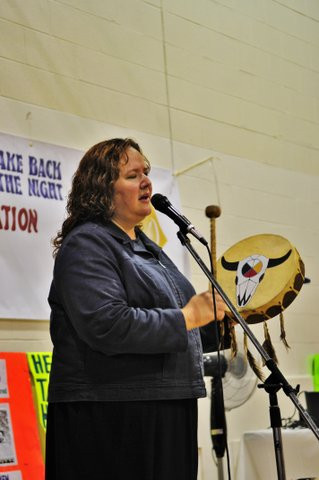
Gelay Amdo
Clearly, this community experiences a high level of violence, and where violence exists, sexual violence is not far behind. Sexual violence happens to all of us but most likely to our most vulnerable, often most oppressed in society. Indigenous people are clearly part of these groups.
So Take Back the Night needed the leadership of Indigenous community since it was majority settlers who had been planning Take Back the Nights in years before. It was another shift, instead of us (the planning committee) making all the decisions and planning the event, we needed to turn to Indigenous women and 2 Spirit people on the committee for their leadership, suggestions and what made sense to make this event “fit” in with their cultures and traditions and the work Indigenous communities were already doing to end violence.
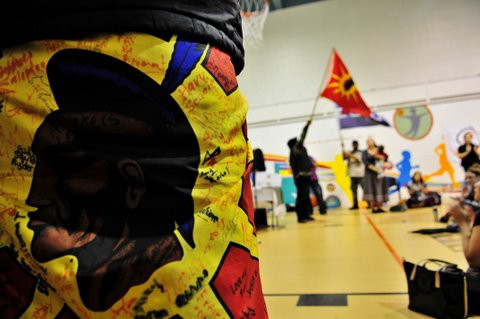
Gelay Amdo
While I think it was a challenge for us to take direction instead of provide leadership, I think us settlers on the committee learned a great lesson in allyship: how to truly give space to communities that have never had that space before and how to do it with grace and allyship, not fear and resentment.
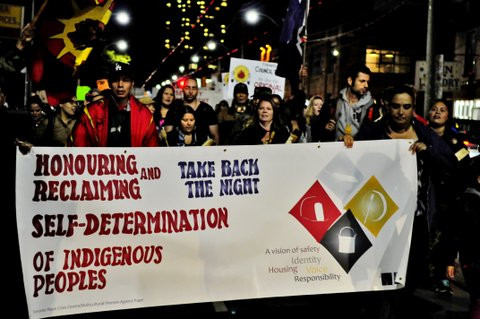
Gelay Amdo
Take Back the Night this year was different. I think I have wanted to reject the idea that it was because I wanted settlers to see that “look! It’s just the same, but with Indigenous folks! They didn’t change everything!” But it did change things. As Krysta Williams taught me, “we need to decolonize gender by including men,” and Percy Lezard shared on the rally stage: “we are a community that includes everyone, we are not exclusive.”
I learned so much with these two statements about dividing men and women as settler feminism has done. Take Back the Night was different because working with Indigenous women and 2 Spirit People meant we could see ourselves as survivors but we also had to see ourselves as folks who benefit from genocide and colonialism at the same time. And that forced survivors to see our similarities as well as our fundamental differences at the same time. And how we Take Back the Nighters can be allies in the long haul, to end sexual violence in all communities, not simply our own.
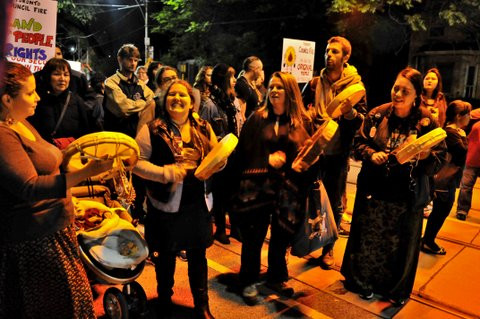
Gelay Amdo



